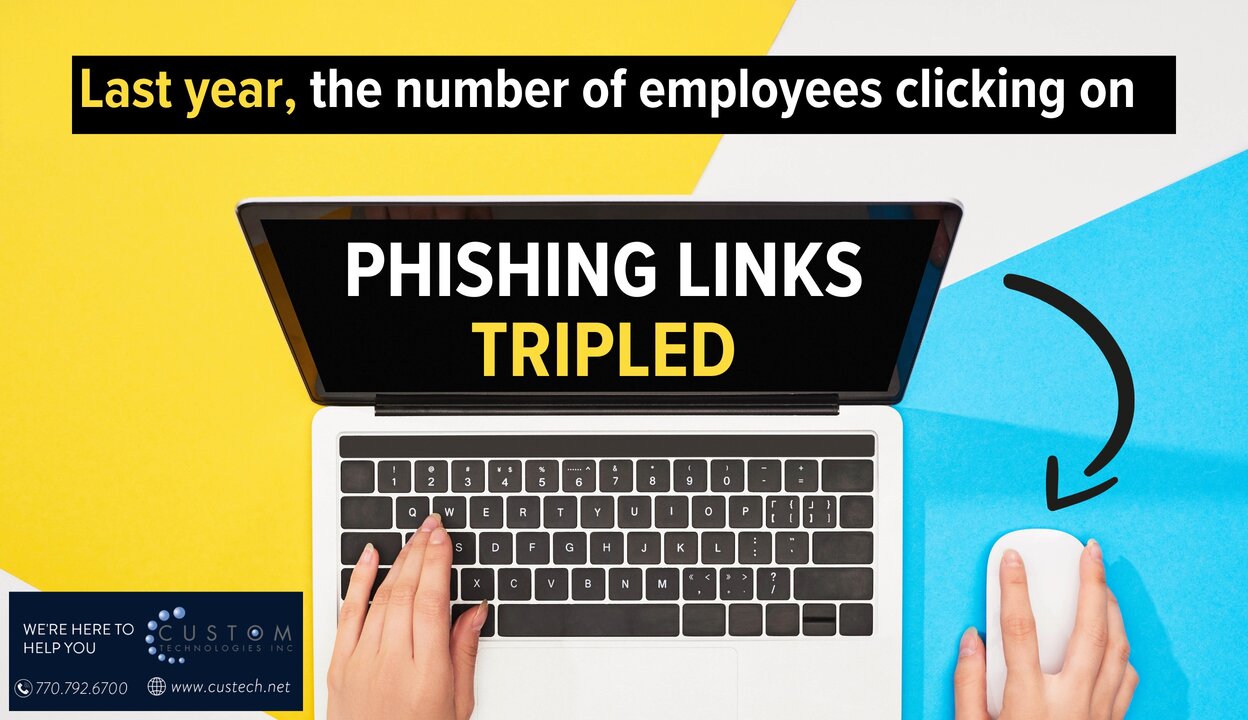
Have you ever stopped to consider how many phishing scams your employees face each day? The answer may be more alarming than you think.
Over the past year, the number of employees clicking on phishing links has tripled—and businesses are paying the price in data breaches, downtime, and lost trust.
Before we dive deeper into why this is happening, let’s take a step back.
What Is Phishing—and Why Should You Be Concerned?
Phishing is a type of cyberattack where scammers pose as trusted sources to trick people into handing over sensitive information like passwords or payment details.
A common example? An email that appears to be from Microsoft, prompting your employee to log in. Once they do, their credentials are captured—and just like that, a cybercriminal has the keys to your digital kingdom.
And here’s the kicker: phishing attacks are not just becoming more frequent—they’re also getting harder to detect.
Phishing Is Evolving—and Spreading Beyond Email
Email is still a common phishing tool, but it’s no longer the only one. Cybercriminals are now planting fake links in:
🔹 Search engine results
🔹 Social media posts and ads
🔹 Website comments and popups
Why? Because many employees have been trained to be cautious about email—but not necessarily everywhere else online.
Why Are More People Falling for Phishing Scams?
There are a few key reasons:
🧠 Alert fatigue – Constant exposure to phishing attempts wears people down. It's hard to stay on high alert all the time.
🎭 More convincing tactics – Fake websites and emails are nearly indistinguishable from real ones.
🔐 Targeting trusted platforms – Scammers now focus on platforms like Microsoft 365, where compromising one account could expose your entire organization.
Employees: Your First Line of Defence—or Your Weakest Link
Your team can be your greatest security asset—or your biggest risk. A well-informed and well-trained team is much more likely to identify phishing attempts before any harm is done. But when employees aren’t equipped with the right knowledge, it only takes one click to create a serious breach.
How to Protect Your Business from Phishing Attacks
🎓 1. Prioritize Employee Education
- Teach your team what phishing looks like—not just in email, but across the web.
- Encourage them to question unexpected login prompts and double-check URLs.
- Provide regular, ongoing training to keep the threat top of mind.
🛡️ 2. Strengthen Your Security Tools
- Implement multi-factor authentication (MFA) to add another barrier for attackers.
- Keep systems and software up to date to close known vulnerabilities.
- Invest in a comprehensive cybersecurity strategy that includes endpoint protection, threat detection, and secure backups.
Phishing Isn’t Going Anywhere—But You Can Stay Ahead
Phishing scams are growing in volume and sophistication, but your business doesn’t have to be a victim. With the right combination of training, tools, and awareness, you can greatly reduce your risk.
🔐 Need help building your phishing defense plan? We’re here to help.
📩 Get in touch today.



